Вы здесь
Flora of Mangyshlak.
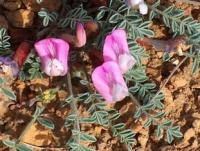
Bicycle tours in Kazakhstan.
“Perhaps my ancestor was an honest executioner:
I dream of poppies, warmed by the ray,
Scarlet carnations, and full of threat,
Terry-greedy, open roses.
I see lilies above a wave:
Bloodied by the crimson moon,
They, having forgotten their color, are lifeless and tired,
They flicker fabulously with a bright scarlet color,
And with sweet horror, in frozen silence,
How the lips stretch and reach out to me"
Balmont Konstantin “Red color”.
Jeep tours and travels in Mangyshlak.
The first floristic collections on Mangyshlak were made at the end of the 18th century by G. Gmelin, who collected plants at Cape Tyub-Karagan in 1773 (Gmelin, 1774). The following collections made by E. I. Eichwald (Eichwald, 1834) date back to 1825. G. S. Karelin in 1832 compiled a floristic description of the northern coast of Mangyshlak (Karelin, 1883, Pavlov, 1948).
Then M.I. Ivanin worked in the Karatau and Aktau mountains and in the Karagiye depression (1846). Large floristic collections were made in Mangyshlak in 1906 by V. A. Dubyansky. Unfortunately, they were not published, but those herbarium specimens that are currently in the Herbarium of the Botanical Institute of the Russian Academy of Sciences (St. Petersburg) were used with appropriate references in compiling a floristic list of the region (Safronova, 1992).
The flora of Mangyshlak belongs to typically desert floras. Currently, it includes 622 species, which belong to 63 families and 286 genera.
More than half of the flora consists of representatives of the families Chenopodiaceae (91 species), Asteraceae (78 species), Brassicaceae (62 species), Poaceae (60 species) and Fabaceae (42 species). It is these five families that are most characteristic of the regional floras of the Iran-Turan subregion of the Sahara-Gobi region (Prozorovsky, 1940; Korovin, 1961; Lavrenko, 1962; Rodin, 1963; Tolmachev, 1970; Kamelin, 1973, 1990; Pratov, 1987).
On Mangyshlak, about 1/3 of the species of the Chenopodiaceae family belong to the edificators, dominants and codominants of plant communities: Anabasis aphylla, A. brachiata, A. salsa, Arthrophytum leh- mannianum, A triplex сапа, Camphorosma lessingii, Ceratocarpus arenarius, C. utriculosus, Krascheninnikovia ceratoides, Halimocnemis sclerosperma, Halocnemum strobilaceum, Halostachys caspica, Haloxylon aphyllum, H. persicum, Kalidium caspicum, Kochia prostrata, Nanophyton erinaceum, Salsola arbuscula, S. arbusculiformis, S. dendroides, S. gemmascens, S. orientalis, S. richteri, Suaeda, Petrosimonia.
The same role is played by 1/3 of the species of the Asteraceae family: Artemisia gurganica, A. halophila, A. kelleri, A. kemrudica, A. lerchiana, A. lessingiana, A. marschalliana, A. santolina, A. terrae-albae, A. tschernieviana, Septaurea squarrosa, Cousinia onopordioides, Inula multicaulis, Jurinea persimilis, Hyalea pulchella, Koelpinia linearis, Lactuca undulata, Lagoseris aralensis, Scorzonera pusilla, S. sericeolanata, Senecio noaenus, Tanacetum santolina, Tragopogon ruber.
About 1/3 of the species, mostly annuals, of the Brassicaceae family have high abundance in the communities: Alyssum turkestanicum, Camelina sylvestris, Chorispora tenella, Crambe edentula, Descurainia sophia, Diptychocarpus strictus, Lepidium perfoliatum, Leptaleum filifolium, Matthiola robusta, Meniocus linifolius, Pachypterigium multicaule, Strigosella africana, S. brevipes, S. scorpioides, Syrenia siliculosa, Tetracme quadricornis, Neotorularia torulosa.
About 1/4 of the species of the Roacea family are codominant plants in the communities: Achnatherum caragana, A. splendens, Aeluropus littoralis, Agropyron fragile, Anisantha tectorum, Bothriochloa ischaemum, Catabrosella humilis, Eremopyrum orientale, Leymus racemosus, Phragmites australis, Poa bulbosa, Pucchinellia distans, caspia , S. sareptana, Stipagrostis pennata. Three species listed above sometimes dominate in cenoses: Poa bulbosa - on rocky soils, Aeluropus littorallis - on meadow and saline soils, and Eremopyrum orientale - on clay soils.
Of the 42 species of the Fabaceae family, 15 belong to codominant species: Alhagi pseudalhagi, Ammodendron eichwaldii, Astragalus ammodendron, A. erioceras, A. karakugensis, A. lasiophyllus, A. lehmannianus, A. oxyglottis, A. scabrisetus, A. tribuloides, A turcomanicus, A. ustiurtensis, Caragana grandiflora, Trigonella arcuata, T. cancellata. Communities dominated by Caragana grandiflora are very characteristic of the vegetation of Mangyshlak.
A relatively large number of species are represented on Mangyshlak by the families Boraginaceae (32), Caryophyllaceae (23), Scrophulariaceae (20), Polygonaceae (20) and Lamiaceae (13), which are also common in desert floras (Safronova, 1993).
The spectrum of these five families is different in different regions, since it depends on the unique natural conditions of the latter. Species included in the first 10 families make up 70.9% of the flora of the region. The remaining 29.1% is distributed among species belonging to 52 families, 33 of which contain no more than 3 species each and constitute only 8.9% of the total flora.
The first four families are characterized by the largest number of genera: Poaceae - 35, Brassicaceae - 34, Asteraceae - 32 and Chenopodiaceae - 29. 36 families include 1 genus. The largest genera include 3: Astragalus (19 species) - the largest genus in Central Asia (Kamelin, 1973), Artemisia from the subgenus Seriphidium (18 species) - a genus especially numerous in the Iran-Turan desert subregion (Lavrenko, 1962), and Salsola (15 species), the vast majority of species of which are characteristic representatives of the flora of desert territories of Europe, Asia and Africa (Bochantsev, 1969).
The basis of the flora of Mangyshlak (about 80%) consists of species whose habitats lie within the region of Ancient Middle-earth. The remaining 20% of the flora are cosmopolitans and species with a Holarctic or Palaearctic range. Eight species are included in the Red Book of the Republic of Kazakhstan as rare endangered species, and fine-tomentose wormwood is listed in the book “Rare and Endangered Species of Natural Flora of Kazakhstan.”
Hawthorn is a small tree or shrub, three to four meters high, with white inflorescences and purple-black edible fruits. Hawthorn grows in the Karatau and Aktau mountains, on rocky slopes and the bottom of wet gorges. Persian bindweed is an ornamental plant. I
t has large flowers with a white corolla. Bindweed tolerates heat well, consumes little moisture and can develop normally in sand and saline soils. The flora of Mangistau is rich in medicinal plants. About 50 species grow here, ten of them are approved for use as medicines, the rest are used in traditional medicine.
In the flat areas of Mangistau, parmelia grows - a perennial lichen used in folk medicine to treat tuberculosis and as a hemostatic agent. Ephedra in Mangistau is represented by two species, and of the 60 species of tamarisk existing in the world, three species grow in the desert areas of the peninsula.
To preserve the entire natural complex of southwestern Kazakhstan in its natural state, the Ustyurt State Nature Reserve was created on July 12, 1984 on the lands of the Yeralievsky district of the Mangistau region. The territory of the reserve has an area of 223,000 hectares and covers part of the western cliff of Ustyurt, a narrow cliffs strip of the plateau itself and the vast depression of Kenderlisor.


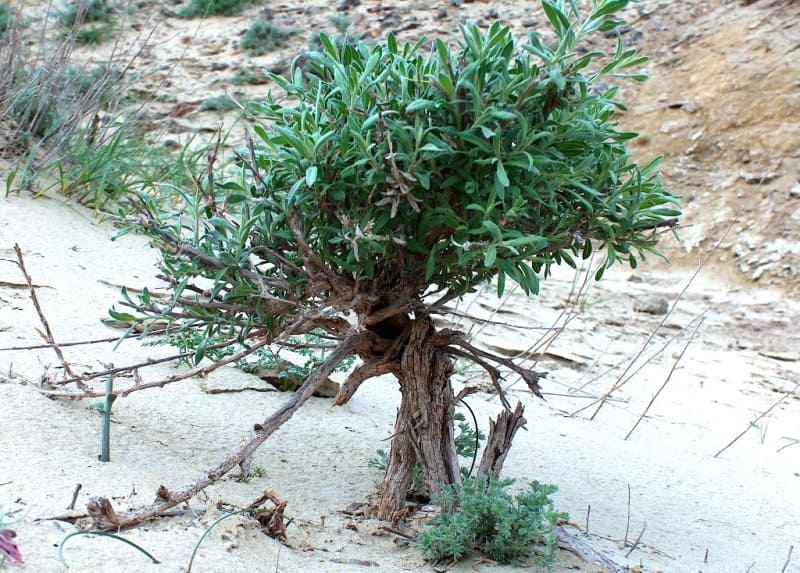


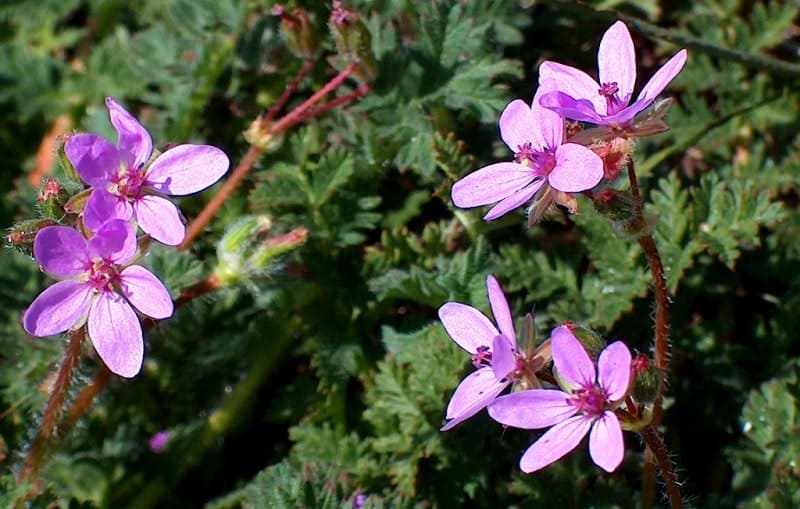

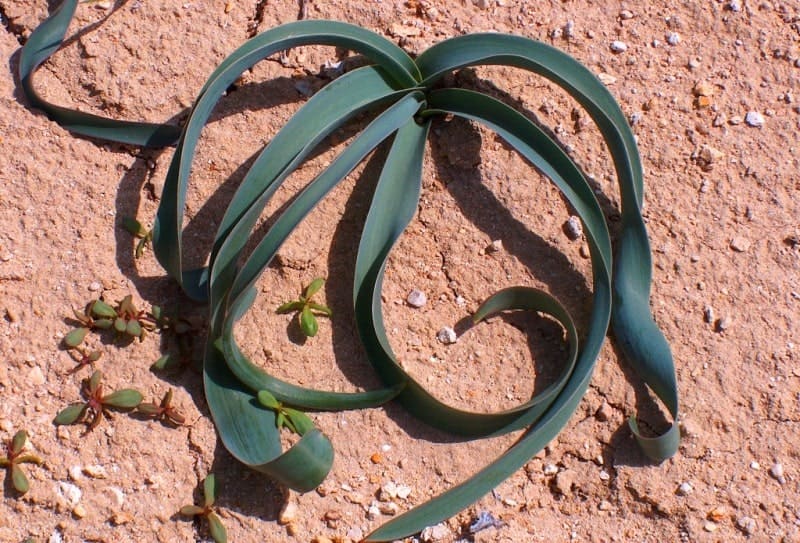
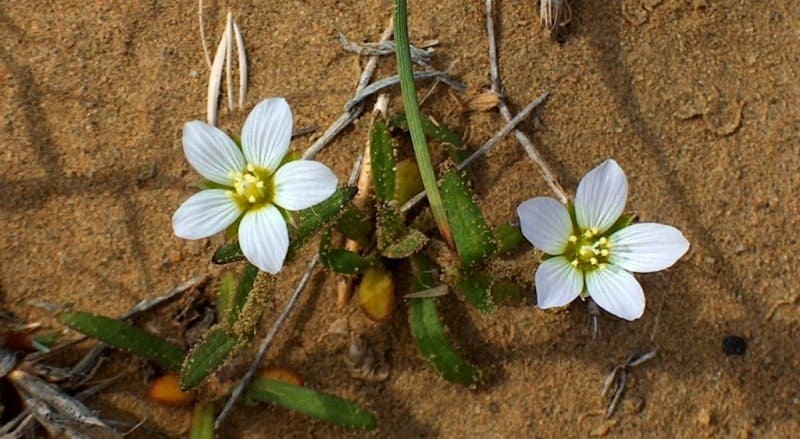


Authority:
I.N. Safronova. "The Deserts of Mangyshlak".
M. A. Mirzoev. "Mangystau: voices of centuries." Almaty, Kazakhstan, 1994. 240 s
Photos by:
Alexander Petrov.







